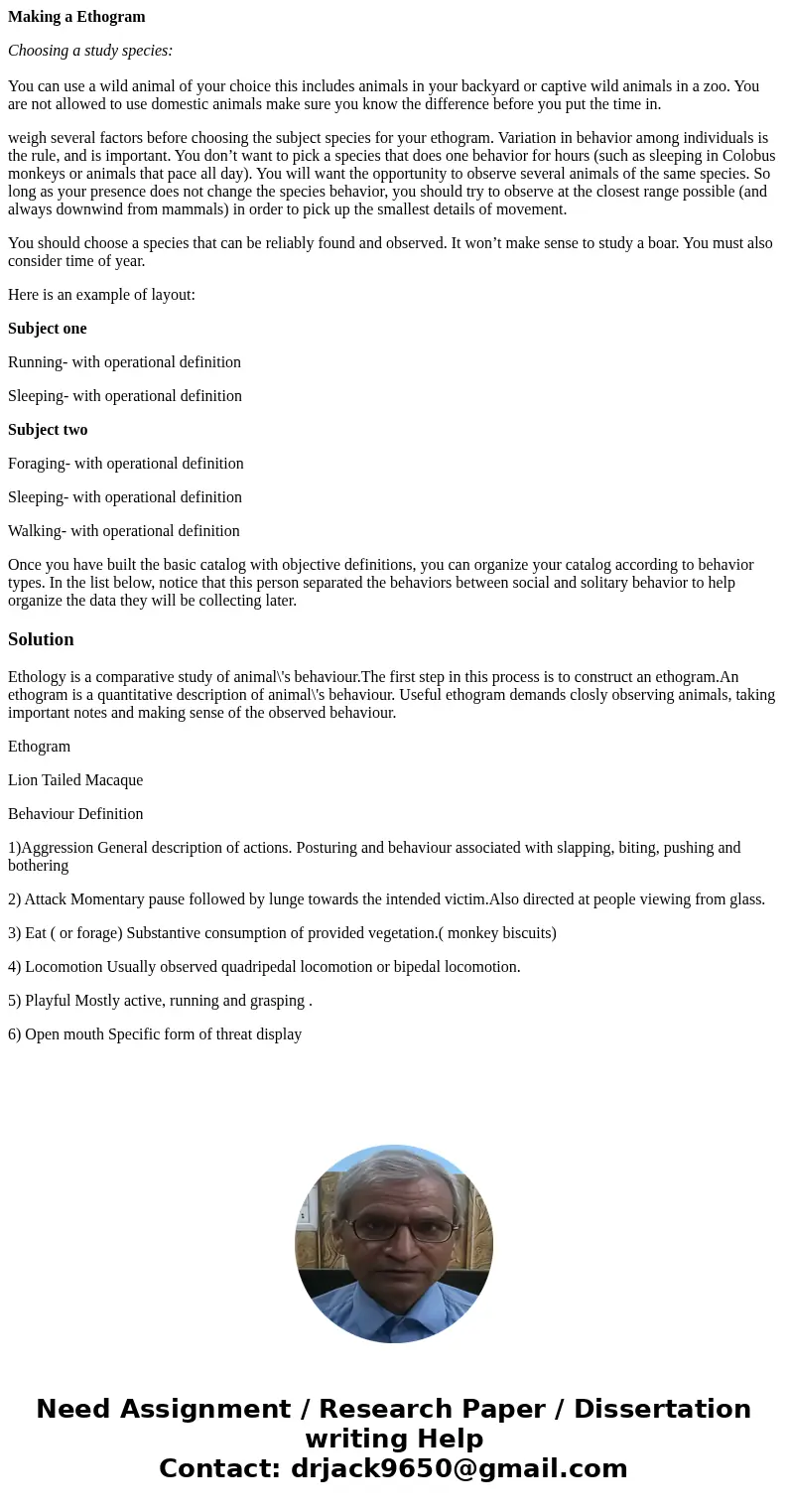Making a Ethogram Choosing a study species You can use a wil
Making a Ethogram
Choosing a study species:
You can use a wild animal of your choice this includes animals in your backyard or captive wild animals in a zoo. You are not allowed to use domestic animals make sure you know the difference before you put the time in.
weigh several factors before choosing the subject species for your ethogram. Variation in behavior among individuals is the rule, and is important. You don’t want to pick a species that does one behavior for hours (such as sleeping in Colobus monkeys or animals that pace all day). You will want the opportunity to observe several animals of the same species. So long as your presence does not change the species behavior, you should try to observe at the closest range possible (and always downwind from mammals) in order to pick up the smallest details of movement.
You should choose a species that can be reliably found and observed. It won’t make sense to study a boar. You must also consider time of year.
Here is an example of layout:
Subject one
Running- with operational definition
Sleeping- with operational definition
Subject two
Foraging- with operational definition
Sleeping- with operational definition
Walking- with operational definition
Once you have built the basic catalog with objective definitions, you can organize your catalog according to behavior types. In the list below, notice that this person separated the behaviors between social and solitary behavior to help organize the data they will be collecting later.
Solution
Ethology is a comparative study of animal\'s behaviour.The first step in this process is to construct an ethogram.An ethogram is a quantitative description of animal\'s behaviour. Useful ethogram demands closly observing animals, taking important notes and making sense of the observed behaviour.
Ethogram
Lion Tailed Macaque
Behaviour Definition
1)Aggression General description of actions. Posturing and behaviour associated with slapping, biting, pushing and bothering
2) Attack Momentary pause followed by lunge towards the intended victim.Also directed at people viewing from glass.
3) Eat ( or forage) Substantive consumption of provided vegetation.( monkey biscuits)
4) Locomotion Usually observed quadripedal locomotion or bipedal locomotion.
5) Playful Mostly active, running and grasping .
6) Open mouth Specific form of threat display


 Homework Sourse
Homework Sourse